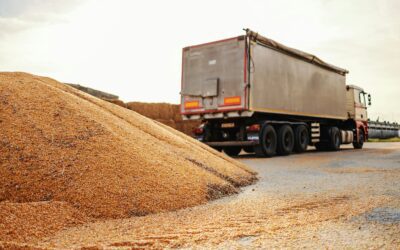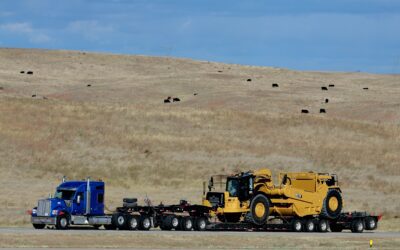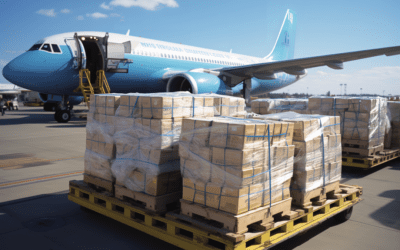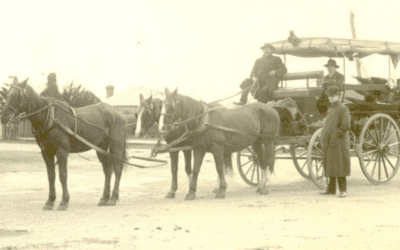Fertilizers are essential in the agricultural industry and supply crucial nutrients to crops worldwide. The industry is expected to reach 9.7 billion by 2050, and fertilizer prices account for nearly one-fifth of the United States farm cash costs.
However, the industry faces several issues that could affect the agriculture market, from environmental impacts to geopolitical tensions. The current state of the fertilizer industry and the challenges it faces can lead to disruptions within the supply chain.
Article Overview:
Executive orders encourage the agriculture industry
A notable development was the issuance of Executive Order 14036 by President Biden on July 9, 2021, which aimed to promote competition in the American economy and protect the welfare of workers, such as farmers. The order recognized that farmers struggle within the concentrated market in the agricultural industry, including seed, fertilizer, feed, and equipment suppliers. Addressing the issue, the Secretary of Agriculture increased opportunities for farmers to access markets and receive fair prices for their products.
Another significant change was the announcement of the Fertilizer Product Expansion Program (FPEP) by the US Department of Agriculture on September 27, 2022. The program granted $500 million to increase American-made fertilizer production in the domestic market. Furthermore, the program aimed to combat price hikes on U.S. farmers caused by the war in Ukraine.

Counting the cost of crops
The war in Ukraine has had lasting impacts on the global fertilizer industry. According to The Fertilizer Institute, Russia accounts for 23% of the world’s ammonia exports, 14% of urea exports, 10% of processed phosphate exports, and 21% of potash exports. The conflict has reduced the availability and increased the cost of these fertilizers, affecting many who rely on them for their crops.
The export restrictions imposed by China, which accounts for 30% of global phosphate fertilizer supplies, have also contributed to the shortages and increased prices of fertilizers. China has reduced its fertilizer exports to protect its domestic market. Since 2021, it has imposed measures, including export quotas and inspection requirements on chemical fertilizers. The Fertilizer Institute estimates only 65 nations have the resources to produce fertilizer, making the sector vulnerable to interruptions.
The changes within the fertilizer industry have directly affected the commodity prices of crops such as corn, wheat, soybeans, and others. The prices of these crops continuously fluctuate due to weather, trade policies, and supply and demand issues regarding fertilizers.
Policies, regulations, and procedures in the United States
One of the most regulated chemicals within fertilizers is phosphate. Phosphate fertilizers are procured from rocks that contain phosphorus, a non-renewable resource that is becoming scarce. Moreover, phosphate fertilizers can have a significant impact on the environment. In fact, at least 11 states have banned or limited the use and sale of phosphate fertilizers due to their hazards. Michigan and New Jersey have limited the use of phosphate fertilizers for agricultural lands and production, whereas states such as Maryland and Vermont have setbacks from water of up to 25 feet.
Another chemical found in fertilizers is nitrogen, which is produced by combining nitrogen from the air with hydrogen from natural gas, using high temperatures to form ammonia. Usually, corn and wheat benefit from nitrogen fertilizers, however they can also pose many safety hazards due to oxidizing agents that react to combustible materials.
To reduce these risks, importing these fertilizers into the United States requires approval from the U.S. Department of Agriculture (USDA), the Environmental Protection Agency (EPA), or the State’s Department of Agriculture. They ensure the fertilizers meet safety standards for chemicals, such as handling and label requirements.
Checking the box for hazmat
Fertilizer is a crucial part of crop production, but it also poses significant challenges for transportation. The chemicals in fertilizers can often be hazardous, which requires special handling and compliance with many regulations.
Fertilizer falls under hazmat because most of them contain the chemical ammonium nitrate, which is an oxidizer and a potential explosive. The Department of Transportation, EPA, and OSHA require carriers to be certified and comply with regulations regarding bulk fertilizer.
Shippers will need to create and distribute a Safety Data Sheet (SDS) to individuals in contact with the shipment. The SDS should contain details about the chemical, such as the density, pH level, and viscosity, to transport the chemical safely. Both shippers and carriers must provide hazmat training to their employees, covering the safety and security aspects of transporting hazmat.

Fertilizing growth across borders
The United States is one of the largest producers and consumers of fertilizer in the world, making it a major importer and exporter of fertilizer. The Fertilizer Institute (TFI) reports that U.S. ports handle 49 million tons of fertilizer annually, with the Port of New Orleans and the Port of Tampa Bay shipping nearly 14 million tons.
Importing and exporting fertilizer in the U.S. requires transporting large amounts of chemicals that can pose environmental risks. Therefore, shippers and carriers must follow safety and security measures to prevent fertilizer accidents. Some of the challenges of importing and exporting fertilizers are:
- Record low water levels on major U.S. rivers have significantly stopped barge traffic, which is a key mode of transportation for fertilizer. The Mississippi River, which handles about 60% of grain exports, has experienced low water levels due to droughts. This forces barges to reduce their loads, increase their transit time, and raise freight rates.
- The import of chemicals must comply with the Toxic Substances Control Act (TSCA) to enter the United States. Unlike other types of agrochemicals such as pesticides and food additives, fertilizers are not exempt from TSCA. Before importation, chemicals must have a certification filed with Customs and Border Protection (CBP) by the importer.
International Capabilities
Despite the challenges, importing and exporting fertilizer in the U.S. offers many opportunities for shippers and carriers. The U.S. is a major leader in the global fertilizer market. According to the U.S. Department of Agriculture (USDA), the U.S. exported $9.4 billion worth of fertilizer in 2022, making it the fourth-largest exporter of fertilizer in the world. The U.S. also imported $8.6 billion worth of fertilizer in 2022, making it the third-largest importer of fertilizer in the world. Importing and exporting fertilizer in the U.S. allows shippers and carriers to diversify their supply chains. The U.S. imports about 60% of its phosphate fertilizer, which is essential for crop production.
Hopping on the rail of reliable delivery
Rail and intermodal transportation plays a crucial role in the industry, providing reliable and cost-effective ways of moving fertilizer from mines to fertilizer processors. According to TFI, four major railroads handle over 90% of fertilizer traffic, and 63% of fertilizers are moved by rail. Safety, efficiency, and flexibility are the benefits of using rail and intermodal transport for fertilizers. For example, one rail tank car of anhydrous ammonia carries the equivalent of four tanker trucks, enough to fertilize 770 acres of corn.
However, rail and intermodal transportation can have many disruptions such as weather congestion or operational issues. This can affect the reliability and availability of fertilizer, increasing the costs and risks for shippers and carriers.
Fueling fields to the final mile
Trucking is the most reliable service for short-distance or expedited deliveries. Reliability and speed are key benefits of trucks delivering fertilizers. One drawback is the weight limit, for example, the Gross Vehicle Weight limit is 80,000 pounds. This ultimately requires businesses to have more trucks on roadways to haul the same amount of goods. Which makes it more difficult for trucking capacity due to limited certified drivers.
KCH Transportation effectively transports fertilizers
Moving fertilizer is a complex and dynamic process that requires careful planning, coordination, and compliance. By understanding the challenges and opportunities of transporting fertilizers, shippers and carriers can ensure the safety and security of their operations. KCH Transportation specializes in providing safe and customized solutions for transporting fertilizers and chemicals. Talk to one of our dedicated teams today for more information.






